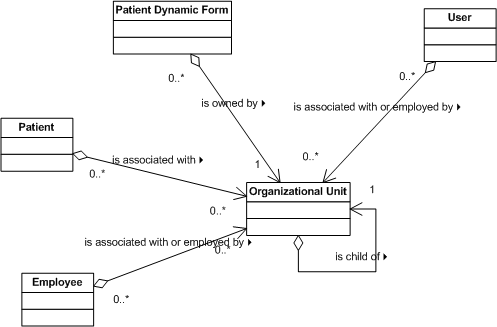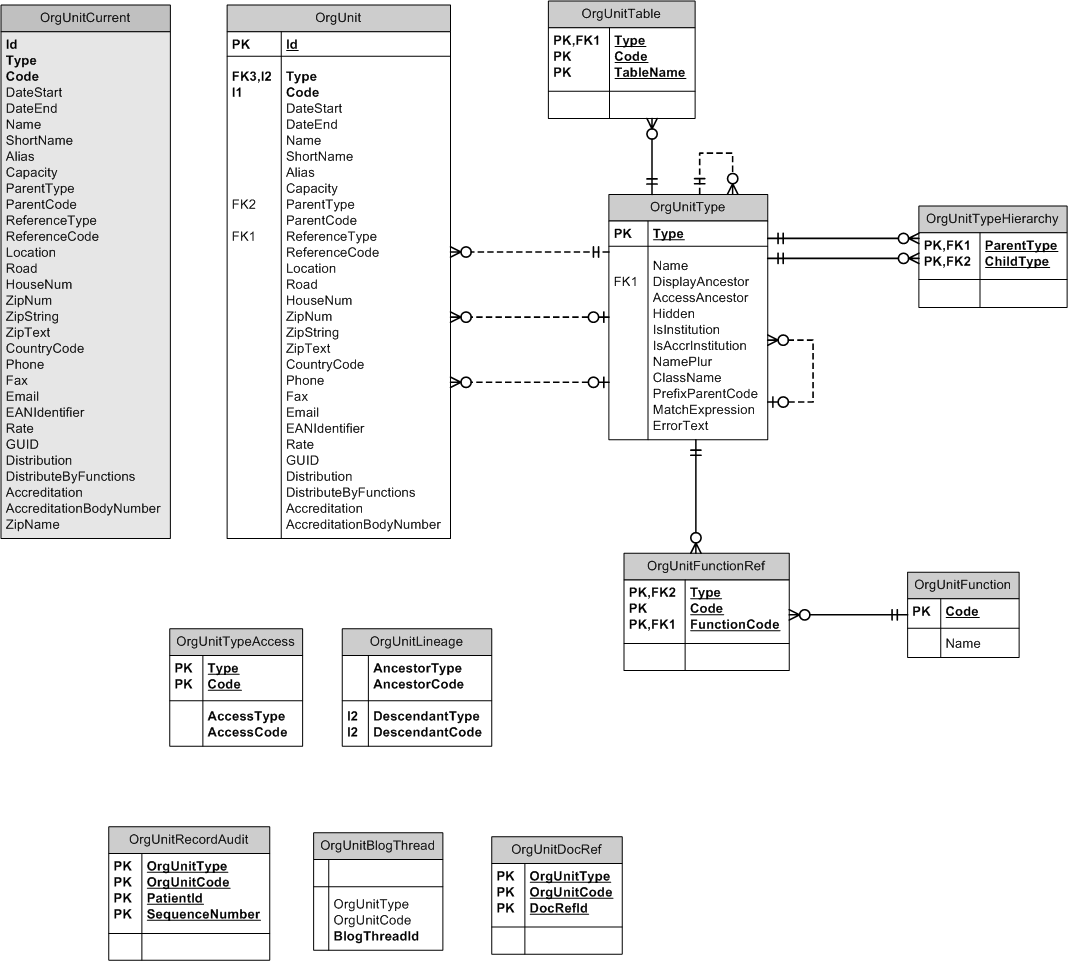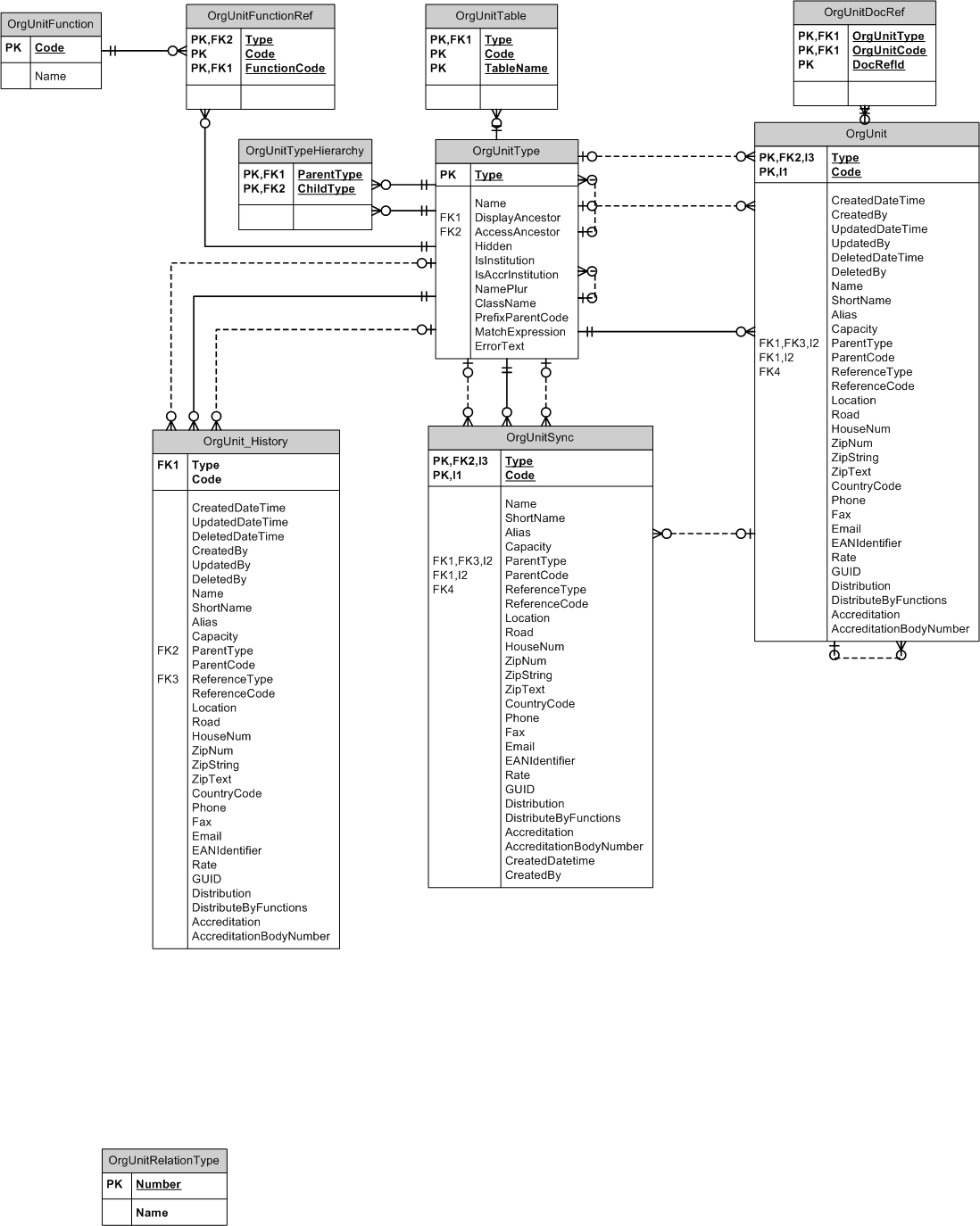| Data Model Subset Organization |
[This is preliminary documentation and is subject to change.]
The organization is a central part of the TOPICA framework.
The organization is strictly hierarchical. Each organizational unit is part of one hierarchy starting with the SYSTEM organizational unit as the root of the entire hierarchy.
The organization is a conernerstone in the security system.
Each user is employed by one organizational unit and may be associated to zero or more additional organizational units.
Each patient can have a relation to an organizational unit as part of the address and temporary adress.
Each dynamic patient data form may be associated with a nubmer of organizational units (possible data owners).
Each dynamic patient data record (= instance of a form) may have relation to an organizational unit (a data owner).
Data model add-ons also rely heavily on the organizational structure to control security.

The organization data model (in the database) has changed from version 4.16 and 4.17 of the data model. Therefore, two different E-R diagrams are needed to describe these two versions.


Database Table OrgUnitTypeHierarchy
Database Table OrgUnitFunction
Database Table OrgUnitFunctionRef
Database Table OrgUnitTypeAccess